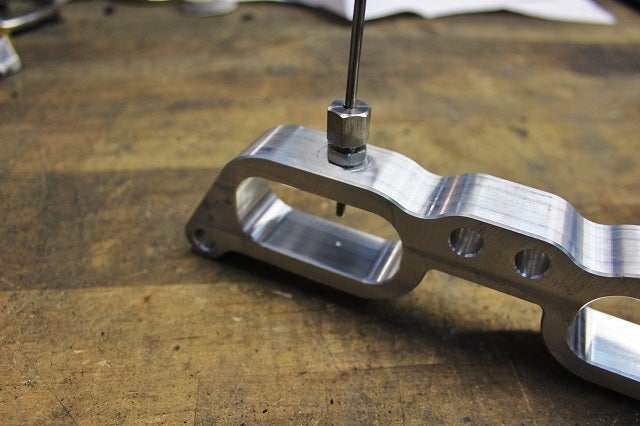
Power through Deletion. 2015 WRX TGV Delete Kit, Part 4: Product Testing
We've got some interesting plans to evaluate the performance benefits of our TGV delete kit. In addition, we want to evaluate any appreciable differences in terms of air temperature between the two materials (aluminum and Delrin) we have selected for our prototypes.
Test Preparation
For our first assessment, we will evaluate airflow temperatures in both materials during dyno testing. The goal here is to determine whether the different heat transfer properties of the two materials have an impact on the airflow within the TGV unit. Ideally we would use pre-TGV and post-TGV sensors to evaluate this, but for our initial test a single sensor will be used.
We started by drilling and tapping each prototype.
Initial Data
We put together several plots to help analyze the data from our dyno pulls so we could reach a conclusion regarding appreciable temperature differences. First, a look at our initial runs with each material on both banks of the engine.
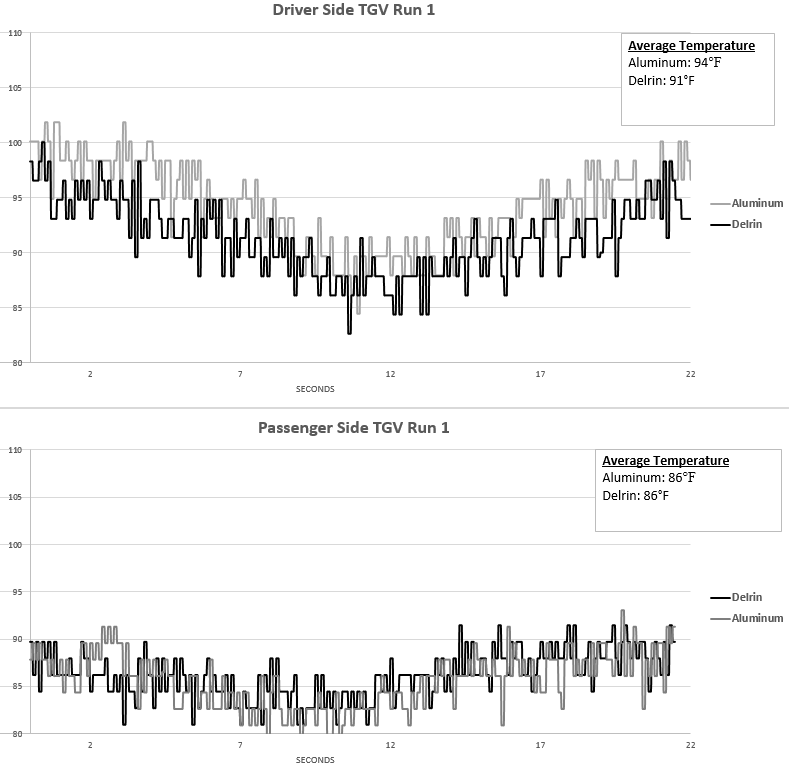
2015 WRX parts testing data
The top-level data shows that the driver's side of the manifold is running at a slightly higher temperature than the passenger side. This will continue to be the case throughout the rest of our runs. On the driver's side during this pull, we see a difference of around 3˚F between the two materials. Not a huge difference, but every bit of reduced heat transfer will be helpful. It is interesting that no temperature difference exists on the colder passenger side bank.
Let's take a look at run 2.
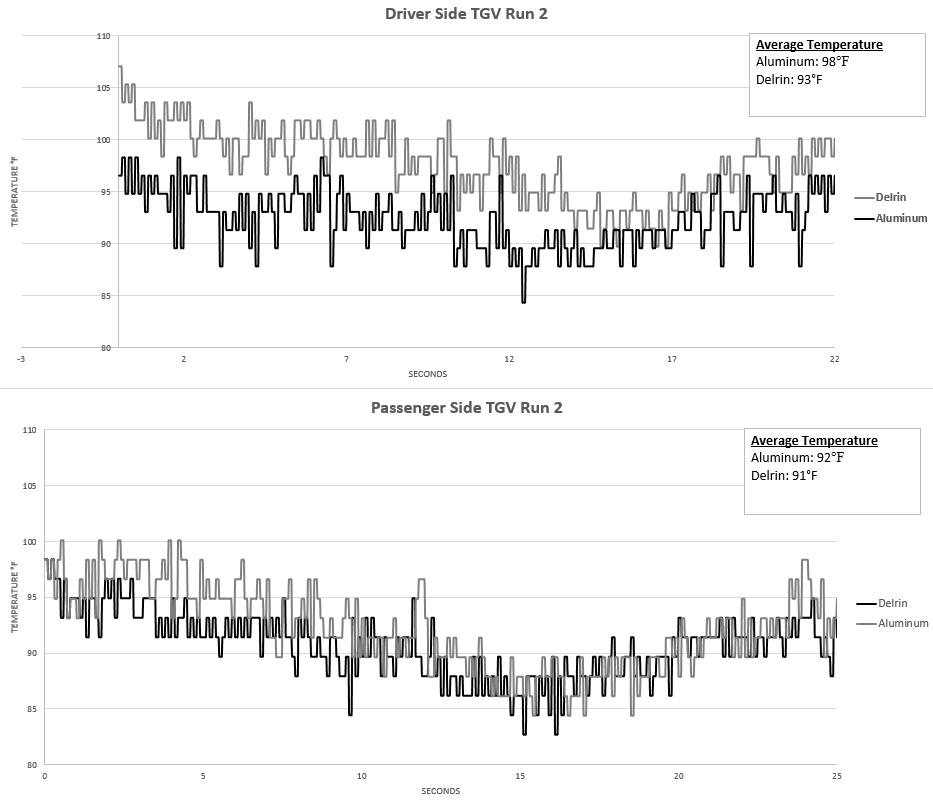
2015 WRX parts testing data
During the second run, we see the two sides of the engines come a bit closer in terms of temperature, and our spread between the two materials gets larger. The driver's side shows a difference of 5˚F between materials, and the passenger side shows a drop of 1˚F.
On to run 3!
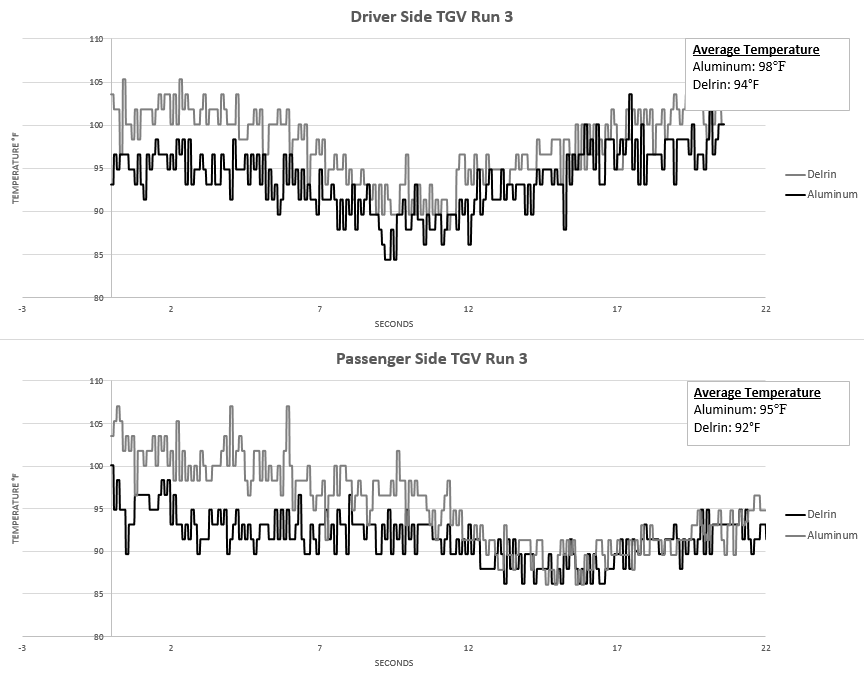
2015 WRX parts testing data
Overall temperatures continue to rise, and the temperature spread between the two materials still exists. It appears that heat-soak is reduced with Delrin, which is portrayed by the drop of 3-4˚F we see with the two materials.
Again, this drop is not substantial, but it is great to see that the Delrin material is indeed making an impact, even if only by a few degrees.
To obtain these data, our car received a custom tune to account for the TGV deletes along with our slew of WRX performance-adding products. Check out the plot from our runs below.
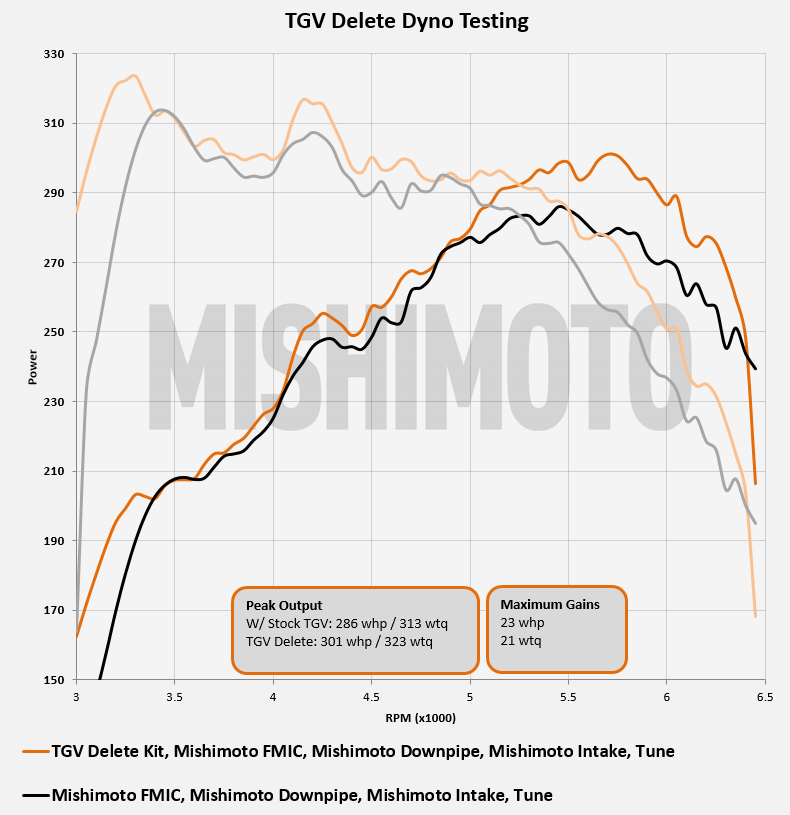
2015 WRX TGV delete dyno data
The TGV delete kit adds a great deal of power on the top-end of the rpm range, starting at around 5,000 rpm. We are making maximum gains of 23 whp and nearly 21 wtq. This pushes the peak output of our 2015 WRX to 301 whp and 323 wtq. We're pretty pleased with these results!
Actual gains are going to vary based on the tune you have. This plot was put together to provide an idea of the output you should expect with similar modifications.
Product Release and Finish Options
The primary benefit of a TGV delete is the improved flow, which can unlock greater power output through tuning. This point is proven based on the design and provides the support we need to produce these kits. In addition, our initial data shows that Delrin provides a small benefit by reducing heat transfer within the air intake tract.
We've opted to manufacture both materials in our first batch of units in order to provide choices for our customers. We will offer two unique finish options, each catering toward a different taste.
- Gold anodized aluminum
- Black Delrin
We would like to capture additional data in the future, including testing regarding flow benefits and further temperature data. Obvious flow benefits and our initial temperature/power data have provided enough information to move forward with production of these kits. Our first batch of deletes are complete and will be available via our vendors very soon.
If further data is obtained for informational purposes, we will update everyone with our findings! Be sure to check out our blog for coverage of other 2015 WRX parts under development.
Thanks for reading!
-John




